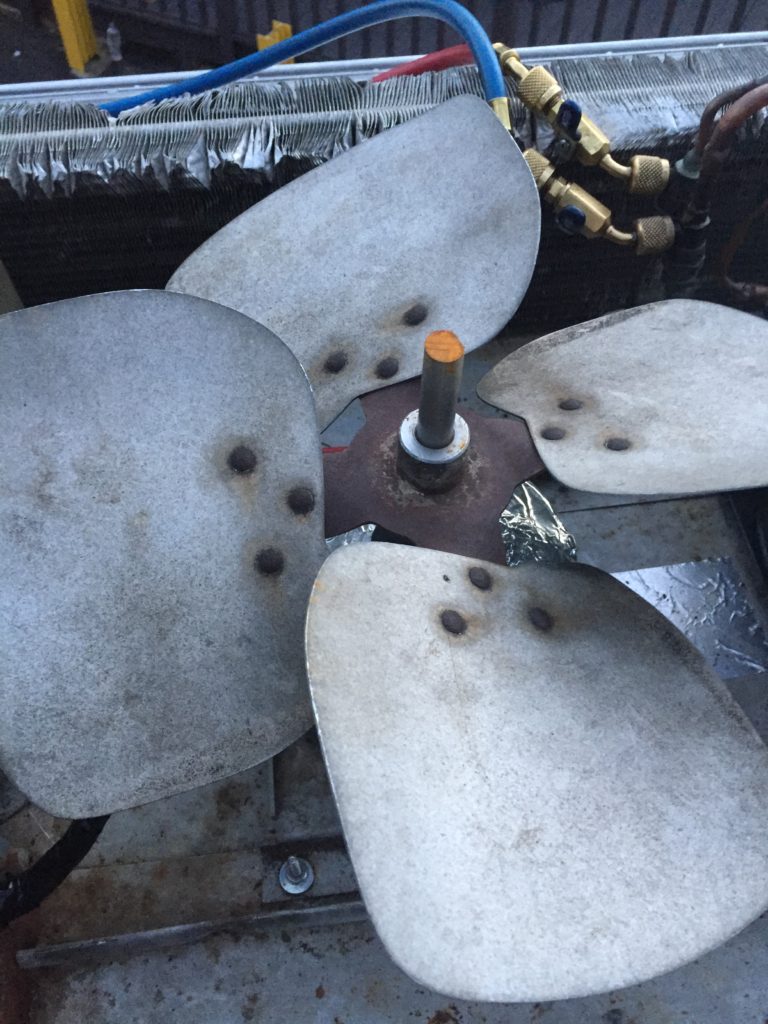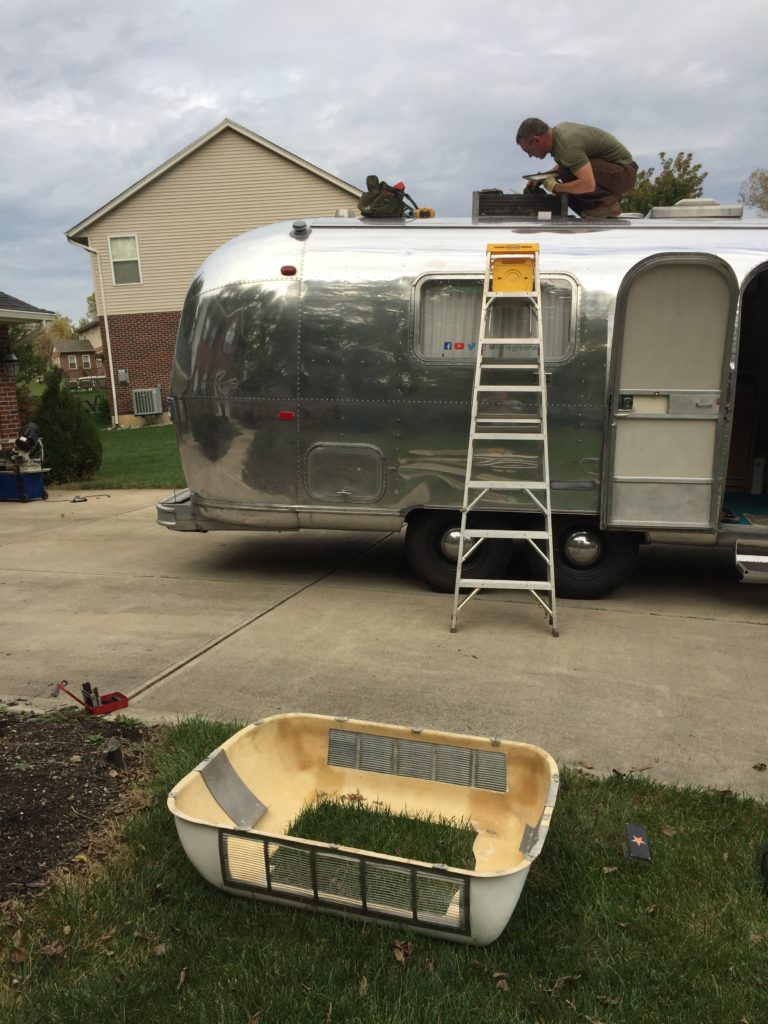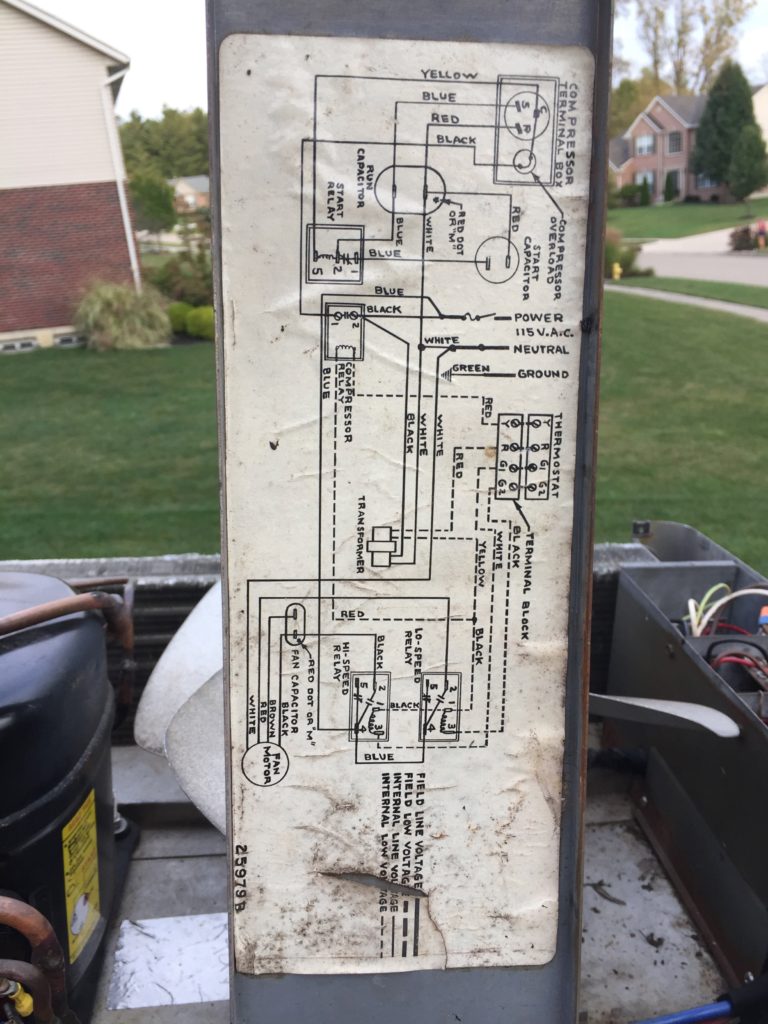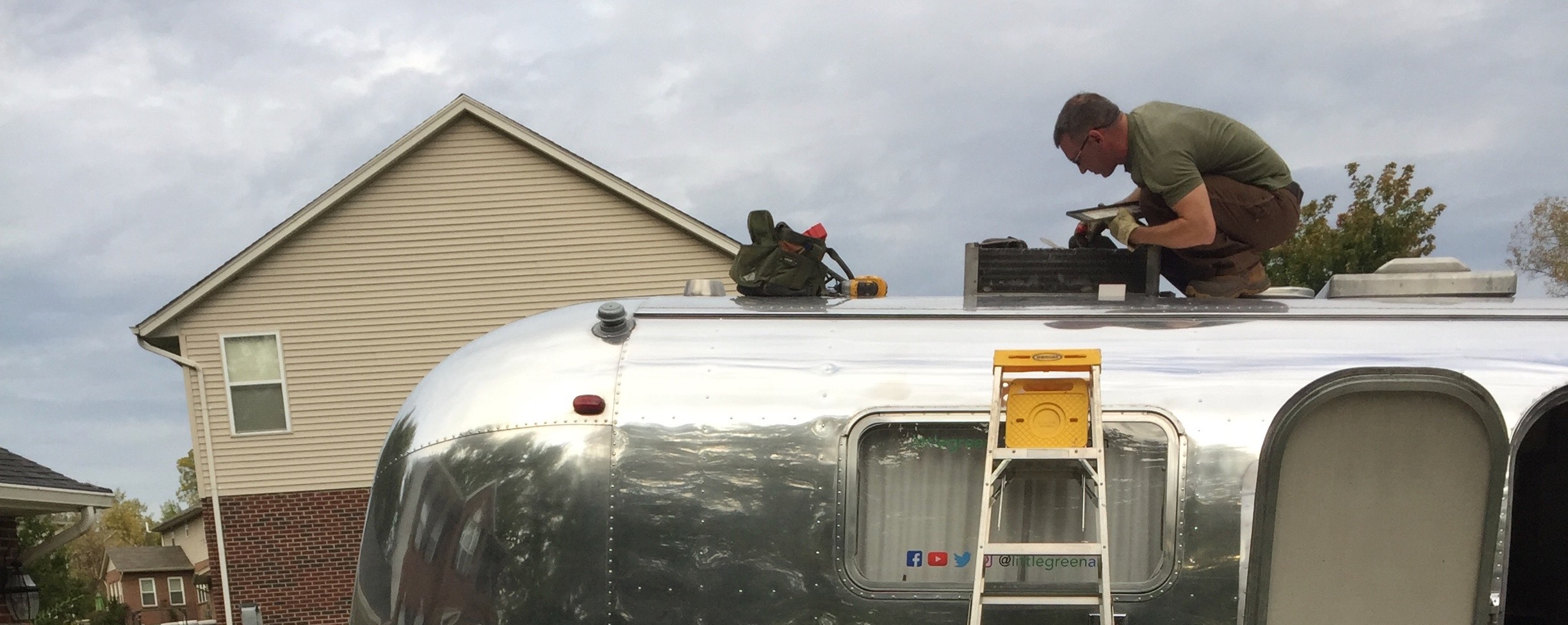When we last left the Armstrong A/C on the Little Green Airstream, we needed to install new capacitors & the fan motor, re-install the existing fan blades on a new spindle, and then test the unit using a new thermostat. This involved electrical connections that were above my experience level, so it was up to my contractor (John Mangino of EKT Universal HVAC) to install. All of these items were fairly easy for him to identify & purchase in advance, using information I’d found on Airstream Forums, a service manual & the old unit as a reference. The only extra effort was that we had to cut the spindle that the fan blades rotate around so that it would fit the unit properly. Once everything was hooked up, the unit ran properly for a 15-20 minute test using a generator for power. I was pleased that the cost was reasonable and that the work had been done in a timely fashion.

However, not long afterwards, I brought the Airstream back to the local trailer shop to have new appliances installed, which required us to remove a wall next to the existing refrigerator. In the process, the A/C thermostat connected to that wall was disconnected. A problem occurred when we re-wired the thermostat. The shop plugged in the trailer to 30 amp shore power and tested the A/C. It ran for about 15-20 minutes, stopped, and wouldn’t re-start.
I made an appointment with John to get some assistance, and he soon discovered that one of the capacitors had burned out. When we re-tested the A/C for just a few minutes using a new capacitor, it also burned out with a puff of smoke. We were left at the end of the day trying to figure out what could be wrong. John was insistent that his installation was properly executed and that the issue had to be with either the power source (the generator we were using) or the trailer’s wiring somewhere in the walls. I did not share his opinion – mainly because the first capacitor burned out using shore power in an controlled environment at the shop – but I also didn’t know what else the problem could be. He promised to return in a couple of weeks to help me get to the bottom of the issue, and I impressed upon him that I’d be leaving for my cross-country journey within a month.
Unfortunately, John didn’t get back to me about resolving the issue in a timely fashion. I’d done my homework during the interim and determined that we were using the right type of capacitors, and I found 2-3 different options for powering the trailer & A/C so that we could rule that out. I texted & e-mailed him with no response. After a couple of more weeks, I reached out again, but he would not make himself available – even to quickly replace the burned out capacitor – until after I was due to leave my hometown for good. After a full day of texting back and forth with him about the issue, it was clear to me that he deemed any additional troubleshooting outside of his scope of work, and offered the first successful test we had as proof of completion. I had a problem with this, because I’d been explicit up front (and multiple times during the process) that this type of vintage retrofit might need a little extra attention in order to get the A/C running properly & consistently, and I’d offered to actively help research any trailer-related questions or issues he had that related to his installation. But with no contract and him paid in full, I had no leverage.
There’s a saying, however, that “luck is where preparation meets opportunity.” And another helpful adage paraphrased from the infamous Shep Gordon, “don’t get mad, solve the problem.”

So I made a phone call, reaching out for assistance from a member of the Airstream community (who I’ll call the Good Samaritan) that I’d come across in my research, who not only had the same year trailer I do, but had fixed the original A/C unit himself – the very same model I have, too. He’d been kind enough to help John & I by answering questions by phone during our installation, and now he very graciously made himself available to help me troubleshoot my capacitor problem when I passed through his area on my way cross-country.
Climbing on top of the trailer, he quickly discovered that the electrical components had not been wired according to the original schematic pasted on the lid of the box where they were installed. Although I’d shown this to John at the beginning of the installation process and he’d insisted that his wiring work was properly done, apparently the components (including capacitors) were wired using methods that might be more appropriate for the type of commercial installations he’s used to at his day job. The Good Samaritan took the opportunity to assert that, “this is the reason why instructions given by the engineers that manufactured the product should be followed.”

Over the course of about 2-3 hours, G.S. corrected the electrical connections, jerry-rigged a connection from the trailer to his house’s power source, and we tested the unit successfully for a solid 20-30 minutes for good measure:
All of that, and I enjoyed the company of a wonderful couple who had lived the Airstream lifestyle under very interesting circumstances and shared their enthusiasm & support for my journey. My contractor, John, was willing & able to do the lion’s share of the work to make this repair possible in the first place, so I count myself lucky and grateful for his taking the project as far as he did. While I did experience some inconvenience & uncertainty during this process, it reinforced some important lessons related both to construction project management and life in general…
- Focus on making the work happen.
- Persist by remaining inquisitive about the possibilities.
- Be humble & polite, and respectful of others’ time & expertise.
- Have a backup plan.
- Have faith.
…which I’d need to remember, because although the A/C was now working faithfully, I soon discovered it had a leak that I’d need to find and repair!
Tools:
- The work was all done by a professional, so the tools were part of his personal kit (various / unknown)
Parts:
- Capacitor: Tecumseh AK Start Capacitor
- Thermostat: Honeywell Pro 3000 Series
Up next: Repairing a Vintage Airstream A/C (Part 5): Leak Troubleshoot




